 |
| November 10, 2020 | Volume 16 Issue 43 |
Designfax weekly eMagazine
Archives
Partners
Manufacturing Center
Product Spotlight
Modern Applications News
Metalworking Ideas For
Today's Job Shops
Tooling and Production
Strategies for large
metalworking plants
FANtastic beast? T.50 supercar by Gordon Murray Automotive
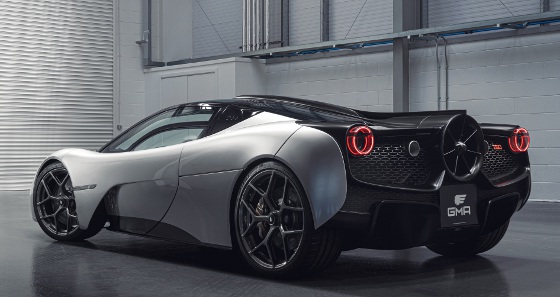
Famed Formula 1 technical designer Gordon Murray was part of a team that once put a car with a rear fan on the track. Now the owner of his own car company, Murray is bringing the downforce-enhancing tech to the street.
The ultra-lightweight T.50 supercar does away with a huge rear wing. Instead, it uses a 400-mm ground-effect fan to help suck air from under the car. It's not a new concept, but the $3-million+ T.50 with a naturally aspirated 3.9-L V12 is a spin on something new -- and full of surprises.
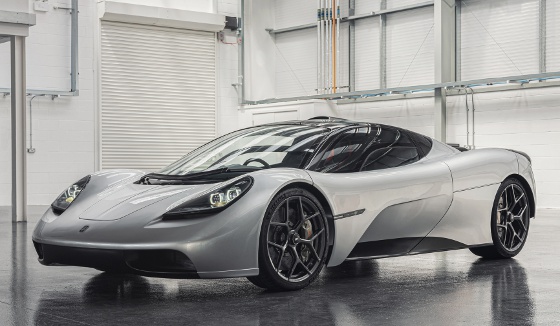
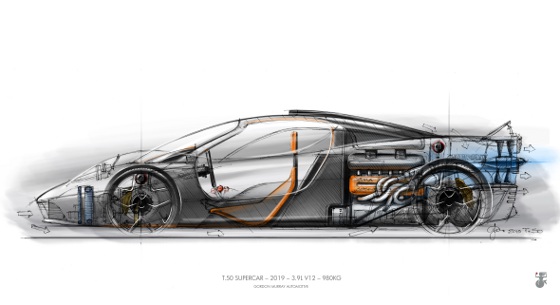
Limited to a production run of 100 units, the rear-wheel-drive T.50 from Gordon Murray Automotive is a pretty tight little three-seater that puts its driver front and center, literally, with its jet-fighter-style front-seat position. From the outside, it has a smaller footprint than a Porsche 911 and weighs in at only 2,160 lb -- the lightest supercar ever. But its maker envisions big things for the car nonetheless, calling it "the spiritual successor to the Murray-devised McLaren F1."
"From the first touch of the titanium throttle pedal to the V12 screaming at 12,100 rpm, the driver experience will surpass any supercar ever built. No other road car can deliver the package of power, instant responsiveness, and driver feedback in such a direct and focused way while remaining comfortable, refined, and usable every day," says Murray. He also claims the T.50 has the most advanced aerodynamics of any road car.
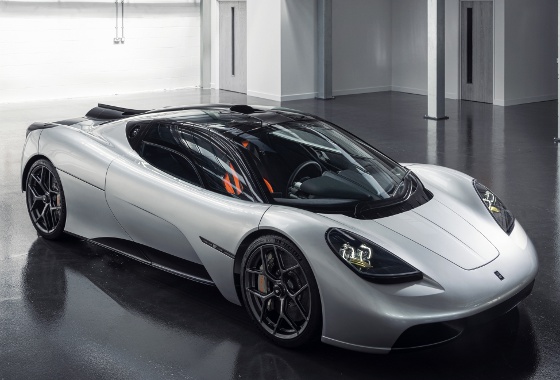
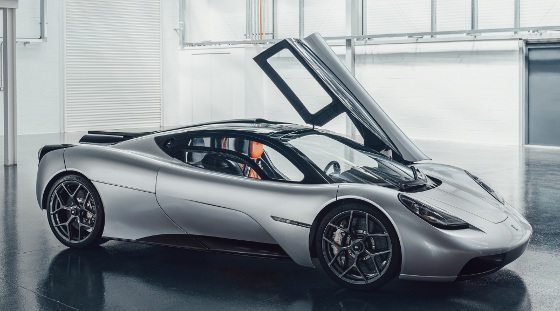
The all-new V12 will be the highest-revving engine ever used in a production car. The bespoke Cosworth GMA mid-mounted engine boasts 650 hp. Paired with the car's lightness, its power-to-weight ratio exceeds that of any other naturally aspirated sportscar designed for the road. The carmaker describes it as "No turbos, no hybrid -- just an exquisitely engineered V12 engine."
The engine delivers maximum power at 11,500 rpm, on its way to a 12,100-rpm redline. The maximum torque figure of 467 Nm is produced at 9,000 rpm, while the pick-up "is a record-breaking 28,400 revs per second."
The company also says the V12 Cosworth GMA engine delivers more power from 4 liters than the F1 produced with 6.1 liters in 1992.
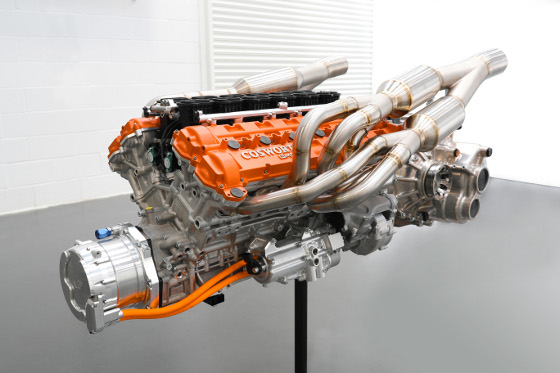
A cold-air ram induction intake sits immediately above the driver's head, and carefully crafted carbon fiber panels in the roof act as a loudspeaker, amplifying engine sound within the cabin. The system is actuated by throttle angle and not revs, meaning the T.50 is quiet and refined on part throttle, growing louder as the throttle opens.
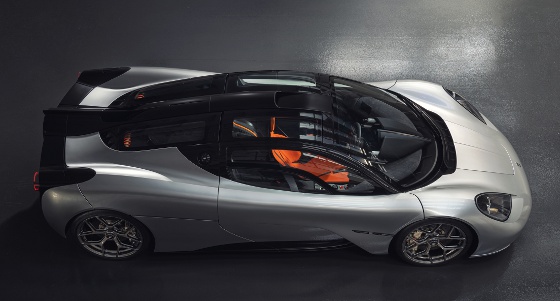
Power is transferred to the rear wheels via a bespoke, lightweight six-speed transmission designed in conjunction with British transmission technology specialists Xtrac. There is also a newly designed and developed "H-pattern" six-speed gearbox, which Murray chose deliberately in contrast to the twin-clutch solution favored by many supercar makers. The transmission features five close ratios, geared for acceleration, with a longer sixth ratio for cruising. Reverse is selected after first flicking the red lockout switch set next to the titanium gear lever.
The Brembo brakes, also developed specially for the T.50, shed speed through a combination of lightweight monobloc alloy calipers and next-gen carbon-ceramic discs -- six piston calipers at the front, and four-piston calipers at the rear. The brakes feature enhanced cooling via new ducting around each wheel.
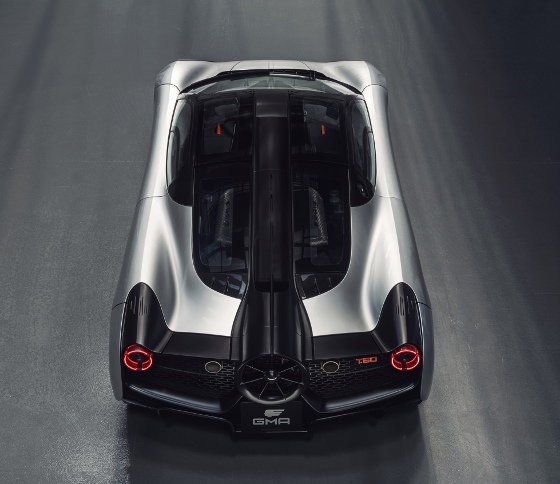
With all of the car's intelligent aerodynamic sophistication housed beneath its high-grade carbon fiber body, the upper surfaces are free from distracting wings, outlets, vents, and bulges -- a key to the purity of the exterior design. The chassis is carbon fiber too. Entry is via dihedral gullwing doors in a nod to the McLaren F1 road car (produced 1992 to 1998), where Murray was the head designer.
The fan is used in conjunction with active underbody aerodynamics and two dynamic rear spoilers. It accelerates air passing under the car rapidly, forcing it through active boundary-layer control ducts that form part of the rear diffuser. The fan also operates simultaneously at high speed while the diffuser valves open. This function can double downforce, enhancing stability and grip, and shorten the braking distance from 150 to 0 mph by 33 ft.
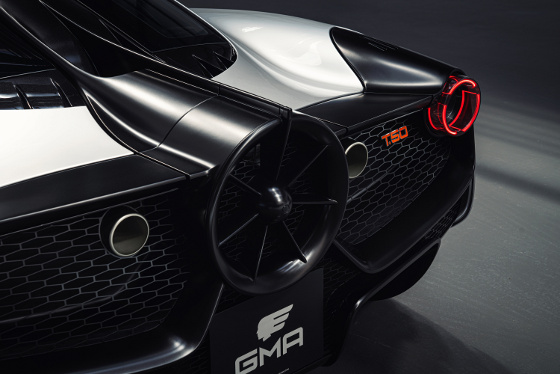
The T.50 features six different aero modes that optimize the car for different scenarios to balance traction and outright performance. Two are automatic (Auto and Braking), while the remaining four (High Downforce, Streamline, V-Max Boost, and Test Mode) are driver selectable.
Braking Mode automatically deploys the rear spoilers to their maximum +45-degree angle when high levels of deceleration are required.
In High Downforce Mode, the rear spoilers deploy at +10 degrees, diffuser valves open, and the fan spools up to increase downforce by 50% for increased traction.
Streamline Mode cuts drag by 12.5% and boosts straight-line speed while also reducing fuel consumption and downforce. Rear spoilers deploy to -10 degrees, reducing base suction and drag. The diffuser valves close partially, stalling the diffuser and reducing downforce, which saves wheel travel to make the car more comfortable and efficient. It also sets the fan to operate at high speed, drawing air from the top deck to minimize drag.
V-Max Boost is the most extreme T.50 setting. This mode combines motorsport slipstream technology, extra power from a 48-V integrated starter-generator, and roof-fed ram induction to boost power to 700 hp.
Test Mode operates when the car is stationary. The fan spools up to its maximum 7,000 rpm, the twin rear spoilers cycle through their full range of movement, and the diffuser ducts/valves progressively open and close before returning to their rest position.
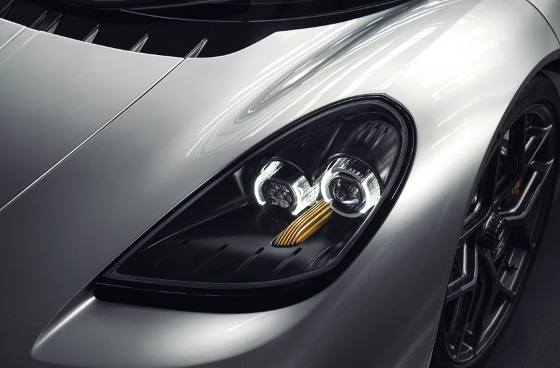
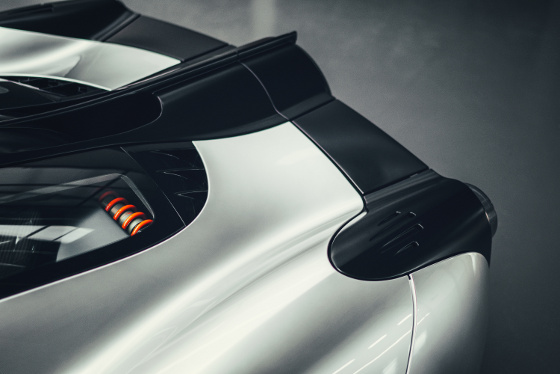
Inside, the driver-centric analogue controls are positioned "to provide the ultimate, highly intuitive, and totally immersive driving experience." The feel is very Formula 1 -- spare, utilitarian, and yet kind of eccentric.
British suppliers are responsible for every major component throughout the interior, as well as every facet of the car's meticulously engineered underpinnings -- an attribute insisted upon by Murray, who was determined the T.50 would be a true British sports car.
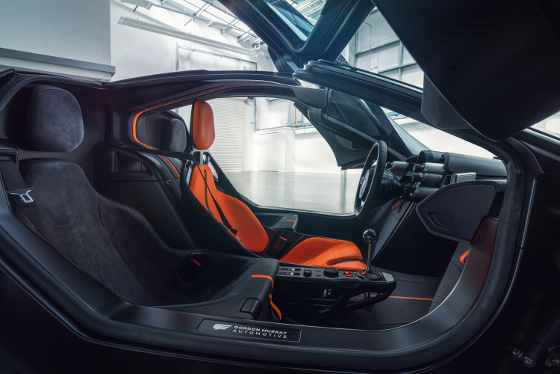
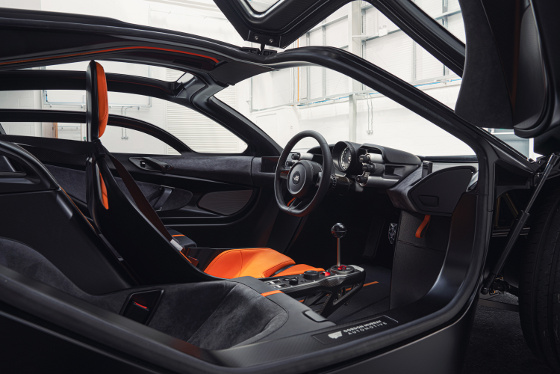
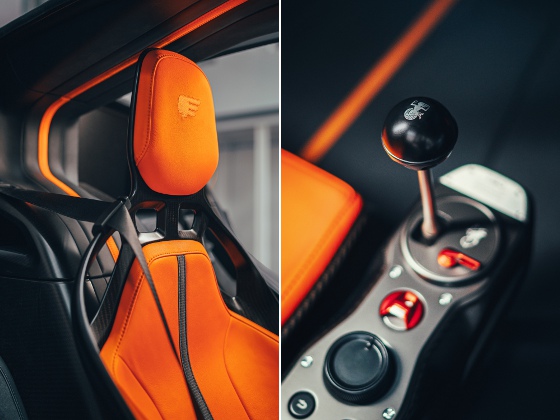
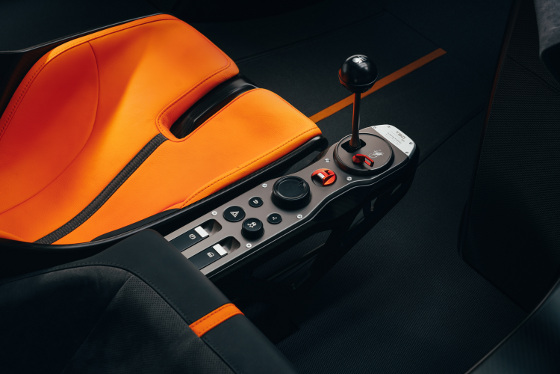

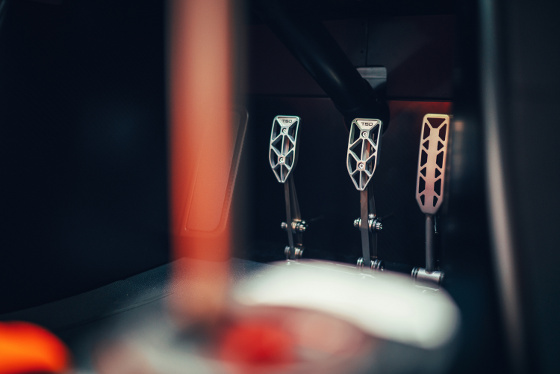
"I designed the [McLaren] F1 as a sort of super GT car -- absolutely road-focused with no plan to go racing," says Murray. "The T.50 design has the same focus and betters the F1 in every area -- ingress and egress, luggage capacity, serviceability, maintenance, and suspension setup. Also, driver-selectable engine maps ensure a driving mode to suit every situation."
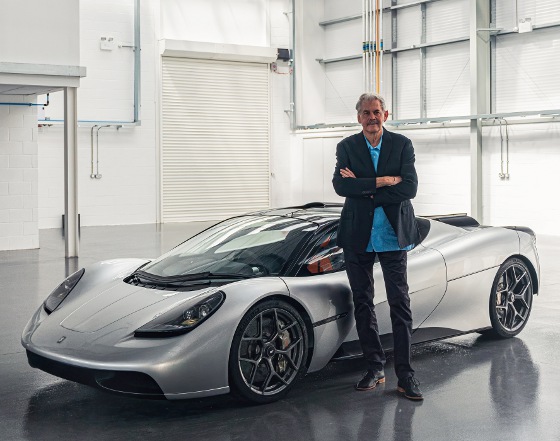
Murray with his T.50 prototype.
There is more to come, though. Murray, who was the technical director to two Formula 1 teams from 1969 to 1990, still wants to get this car on the track. He is planning on selling a racing variant of the T.50 that will be even lighter, faster, and more powerful. It will be more exclusive too. Only 25 units will be made.
The first T.50 road car is expected to start construction in January 2022.
Source: Gordon Murray Design
Published November 2020
Rate this article
View our terms of use and privacy policy
